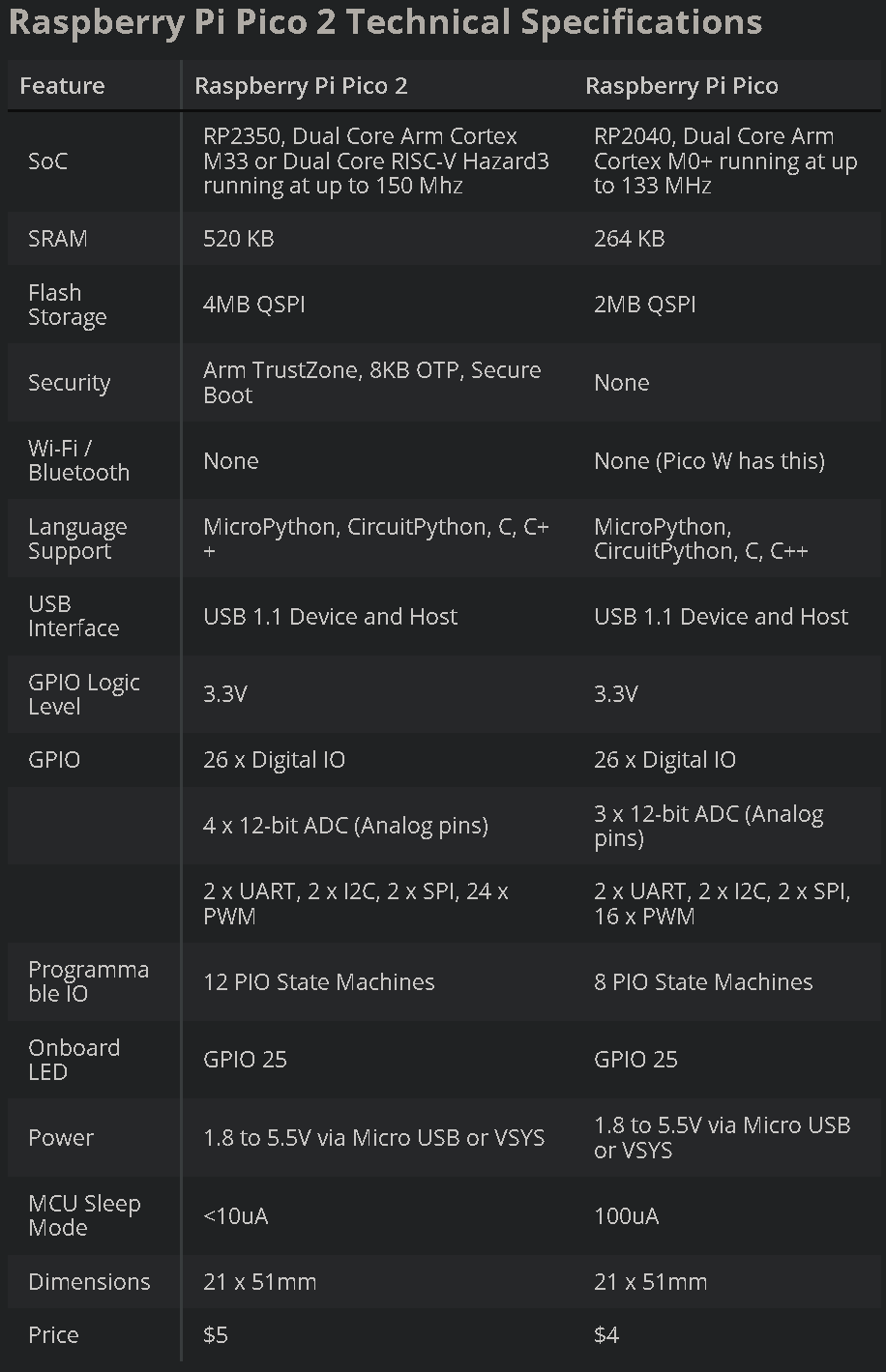Raspberry Pi Pico 2 Technical Specifications^[[1] https://www.tomshardware.com/raspberry-pi/raspberry-pi-pico/raspberry-pi-pico-2-launches-with-arm-risc-v-cores-hands-on-with-the-new-dollar5-microcontroller]
Feature: Raspberry Pi Pico 2 | Raspberry Pi Pico
SoC: RP2350, Dual Core Arm Cortex M33 or Dual Core RISC-V Hazard3 running at up to 150 Mhz | RP2040, Dual Core Arm Cortex M0+: running at up to 133 MHz
SRAM: 520 KB | 264 KB
Flash Storage: 4MB QSPI | 2MB QSPI
Security: Arm TrustZone, 8KB OTP, Secure Boot | None
Wi-Fi / Bluetooth: None | None (Pico W has this)
Language Support: MicroPython, CircuitPython, C, C++ | MicroPython, CircuitPython, C, C++
USB Interface: USB 1.1 Device and Host | USB 1.1 Device and Host
GPIO Logic Level: 3.3V | 3.3V
GPIO: 26 x Digital IO | 26 x Digital IO
Row 9 - Cell 0: 4 x 12-bit ADC (Analog pins) | 3 x 12-bit ADC (Analog pins)
Row 10 - Cell 0: 2 x UART, 2 x I2C, 2 x SPI, 24 x PWM | 2 x UART, 2 x I2C, 2 x SPI, 16 x PWM
Programmable IO: 12 PIO State Machines | 8 PIO State Machines
Onboard LED: GPIO 25 | GPIO 25
Power: 1.8 to 5.5V via Micro USB or VSYS | 1.8 to 5.5V via Micro USB or VSYS
MCU Sleep Mode: <10uA | 100uA
Dimensions: 21 x 51mm | 21 x 51mm
Price: $5 | $4
Screenshot of Specs: 